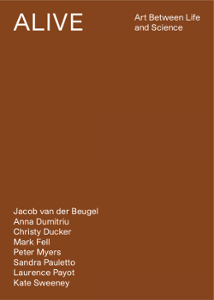Jacob van der Beugel
Jacob van der Beugel, The Pathways of Patients (2016) Concrete, steel, liquid rust and recycled town aggregate
Two large panels explore the treatment and recovery pathways of patients with blood cancers. The works were created by the artist in collaboration with the Epidemiology and Cancer Statistics Group in the Department of Health Sciences at the University.
Unlike some other cancers, social factors do not contribute to the occurrence of blood cancer. However, research shows that people from a lower sociodemographic have a more challenging journey through treatment and, in the case of severe conditions, a higher mortality rate. The artist was struck by this inequality and wanted to draw attention to it in his work. In the panels each line of rust represents a patient journey. The more polished the surface of the concrete, the longer and smoother the line, conveying the correlation between the nature of the journey and its outcome. In one of the panels the lines are randomly arranged and in the other they are ordered, echoing the manner in which the epidemiologist processes his/her data so as to uncover underlying trends and patterns. The artist is additionally able, through the suggestive use of material, colour and form, to expose the individual human and empathic dimensions which lie behind the collective epidemiological data.
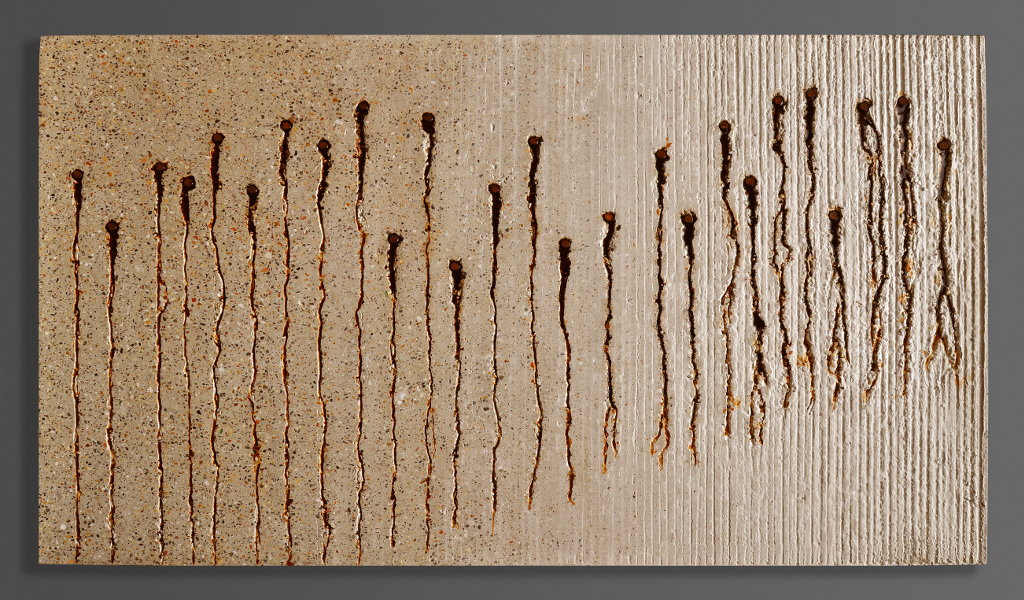
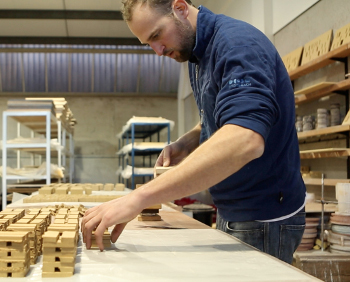
About the artist
Jacob van der Beugel graduated from York University with a BA in History of Art. He then went on to train with some of the most reputed ceramic artists in Britain, and was assistant to Edmund de Waal in 2003-2004. Having set up his own studio in 2004, he has worked on various interdisciplinary projects that always stem from his belief in the importance of materials and metaphors in communication.
In 2014 this approach resulted in producing the largest contemporary ceramic installation in a stately home at Chatsworth House called The North Sketch Sequence, where the DNA of the Duke and Duchess of Devonshire is translated into an entire ceramic room that humanises and captures a modern depiction of the human condition.
His work is collected internationally and held in numerous private collections. He is also currently artist in residence at The Wellcome Sanger Institute and continues to explore modern notions of the self.
Find out more about his work is at http://jvdb-ceramics.com/
Christy Ducker
Christy Ducker and Kate Sweeney, Messenger (2017)
An illustrated anthology of poetry and two film-poems and were inspired by a residency in the University’s Centre for Immunology and Infection (CII). Partnering with Dr Dimitris Lagos and other members of the Centre, Christy (as poet) and Kate (as visual artist) focused on research into healing. They set out to explore two questions – how do we recover from damage and how might we express that recovery as faithfully as possible?
Both artists were struck during their time in the CII with the parallels between art and science, which they observed similarly highlight everyday wonders while tolerating uncertainty in pursuit of the new. Contrary to the popular perception of the language of science being full of impenetrable jargon, they found rich poetic and metaphorical potential, as well as analogies to the literary and filmic spheres, in the language that the scientists used to describe biological processes – terms like ‘transcription’, ‘editing’ and ‘silencing’.
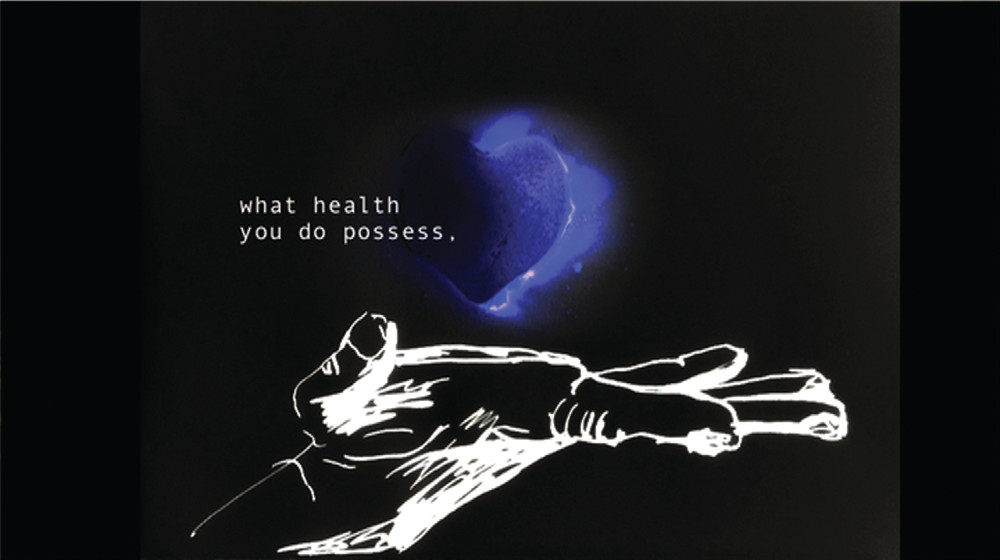
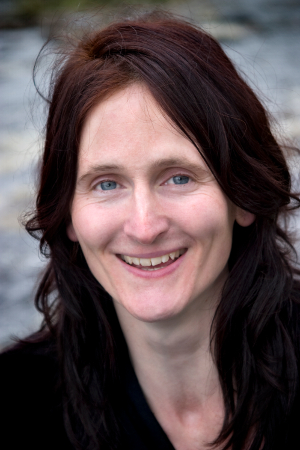
About the artists
Christy Ducker is a poet and teacher of creative writing. Her first full-length collection of poems, Skipper, was published in April and contains work Highly Commended by the Forward Prize judges 2015. Christy’s pamphlet, Armour, was a PBS Pamphlet Choice in 2011 and a Read Regional title for 2012 - 13. Christy collaborated on the book Tyne View, which was a Journal Culture Awards finalist in 2013.
Christy’s commissions include residencies for Port of Tyne and English Heritage. She is a qualified teacher, and has extensive experience of teaching poetry and creative writing in community settings. She directs the Arts Council-funded ‘North East Heroes’ writing and education project.
Find out more about her work
Kate Sweeney is an artist who works with video, animation, photography and drawing. Her film, Hammersmith was awarded Bet International Film at Festival Silencio in Lisbon 2016. Kate's work was also shortlisted for the 2014 Ted Hughes Award for New Works in Poetry.
Find out more about her work
Anna Dumitriu
Anna Dumitriu, Viral Interventions (2016) Steptomyces coelicolor bacteria, genetically modified in antiobiotic production with bacteriophages (sterilised), embroidery, silk
Anna spent several weeks in the laboratory of Professor Maggie Smith in the University’s Department of Biology immersing herself in its important research into identifying new anticmicrobials. She made a series of images which incorporate Streptomyces coelicolor, a harmless bacteria which normally lives in soil. Like many bacteria, it produces several antibiotics that are active against other bacteria when under environmental threat. The bacteria were grown on an agar medium that made them produce lots of pigmented antibiotics and used to stain squares of material which were arranged into a grid in the final art works.
Read more about this project
In a diptych entitled ‘Viral Interventions’ one image shows more of the red antibiotic than the blue. In the other, only the blue antibiotic is present because the bacteria have been genetically modified to only synthesise this one. In both images, on some of the squares of silk, patterns were drawn over the bacteria using a medium containing viruses that kill the bacteria so no antibiotics could be made in these zones to stain the silk.
The collaboration was part sponsored by the EPSRC funded project TARGeTED.
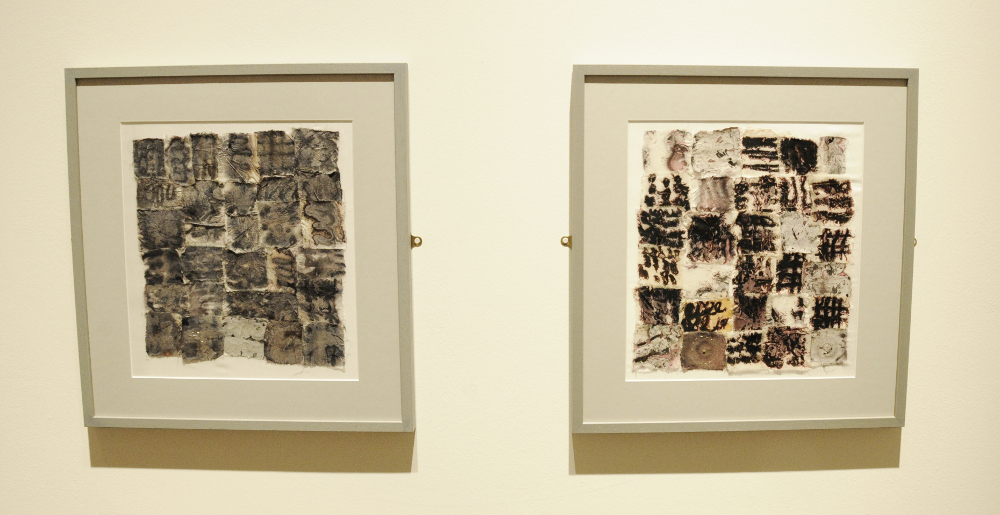
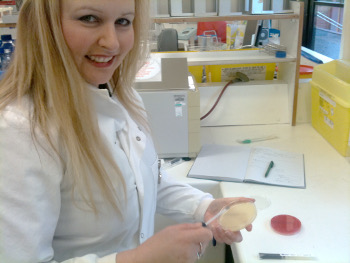
About the artist
Anna Dumitriu (1969) is a British artist whose work fuses craft, technology and bioscience to explore our relationship to the microbial world.
She has worked with the Modernising Medical Microbiology Project at the University of Oxford since 2011, is a visiting research fellow in the Department of Computer Science at The University of Hertfordshire, and an honorary research fellow in the Wellcome Trust Brighton and Sussex Centre for Global Health at Brighton and Sussex Medical School.
She has an international exhibition profile, having exhibited at venues such as Waag Society, Amsterdam, Art Laboratory Berlin, V & A Museum, London and The Picasso Museum, Barcelona.
Find out more about her work
Mark Fell
Mark Fell and Sandra Pauletto, Listening and Silence (2016)
‘Listening and Silence’ is digital art installation inspired by computer simulations of what scientists think people with cochlear implants hear. It has been created in collaboration with Professor Quentin Summerfield in the Department of Psychology at the University of York, a leading specialist in the area of cochlear implant research.
Cochlear implants are medical devices that do the work of the damaged parts of the inner ear (cochlea) to provide a sense of sound. In this work each loudspeaker represents an electrode stimulating a frequency band in the cochlea. Words and sound effects are played through the system while the person walks around. After a while the individual’s ears start to learn how to interpret some of the signals and start to recognise some, but probably not all, of the sounds.
This artistic exploration of what a person with a cochlear implant might hear also raises questions about the ethical issues surrounding the introduction and use of such implants. Whilst some people view them as a positive introduction, others believe they threaten the Deaf Community by promoting deafness as something which should be ‘cured’ and risking its specialist language.

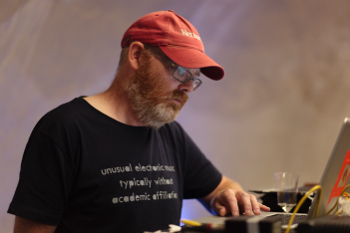
About the artists
Mark Fell is a multidisciplinary artist based in Sheffield (UK). After studying experimental film and video art at Sheffield City Polytechnic he initially reverted to earlier interests in computational technology, music and synthetic sound. In 1998 he began a series of critically acclaimed record releases on labels including Mille Plateaux, Line, Editions Mego and Raster Noton. Fell is widely known for combining popular music styles, such as electronica and club musics, with more academic approaches to computer-based composition with a particular emphasis on algorithmic and mathematical systems. Since his early electronic music pieces Fell’s practice has expanded to include moving image works, sound and light installation, choregoraphy, critical texts and educational projects.
Find out more about his work
Sandra Pauletto is a Senior Lecturer in Sound Design in the Department of Theatre, Film and Television at the University of York.
Find out more about her work
Peter Myers
Peter Myers, Brain scans & related drawings (2016)
During his residency, York based artist Peter Myers collaborated Dr Hannah Thompson and Dr Katie Slocombe in the Department of Psychology to explore Aphasia (communication difficulties) in stroke survivors. He also reflected on his own experience of having Asperger’s Syndrome, which can bring its own challenges in communication.
He produced three canvases of brain scans that depict the brains of stoke survivors with significant areas of damage and three canvases of scans of his own brain which show no evidence of Asperger’s. Peter created also a number of intricate pen drawings which again feature the human brain. This time however the contours are delineated by thin lines of text which explore scientific explanations and personal responses to each condition.
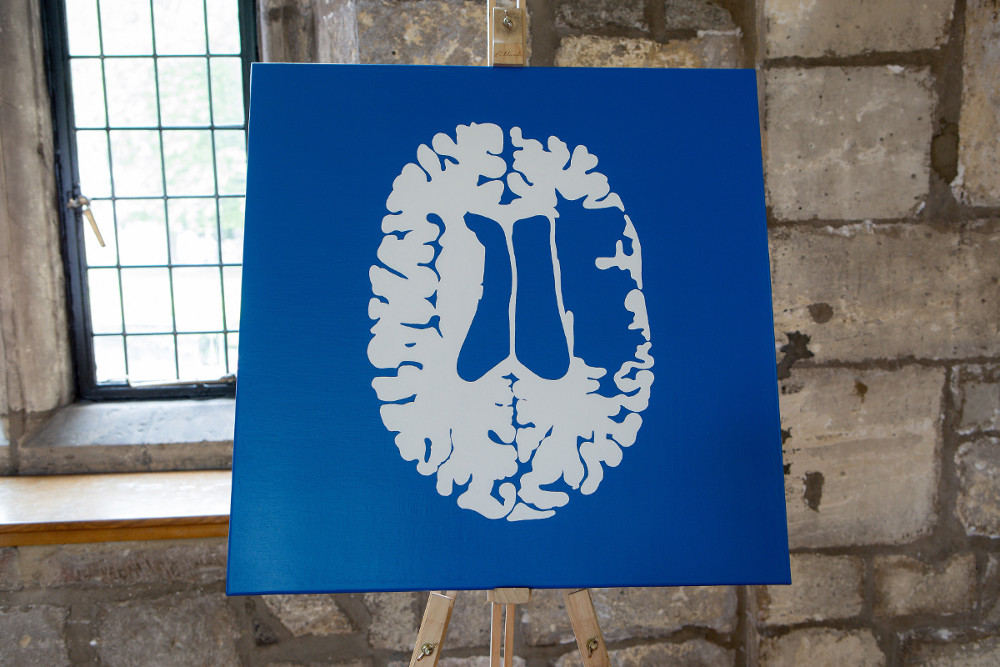
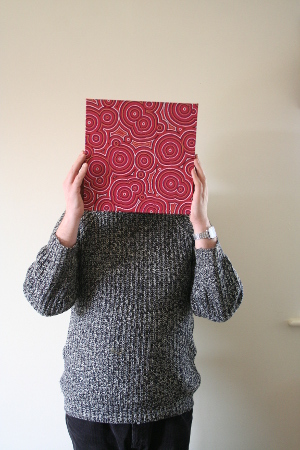
About the artist
Peter Myers creates a wide variety of paintings, drawings, sculptures and collages drawing inspiration occasionally from photographs of scenes, but mostly from his internal imagination and experiences. Most of his work is abstract, introverted and highly patterned: his Asperger’s Syndrome is integral to his art, one aspect of which is his love of detail. The desire to create is intrinsic to his nature; in a sense he is an introverted extrovert expressing inner things outwardly.
Peter is an amateur artist, largely self-taught, figuring out how to do things on his own and in his own idiosyncratic way: sometimes this works, sometimes not but in either event one learns. He has exhibited in various locations, both in the UK and abroad and this year launched a website featuring products with his artwork. An adult colouring book featuring his pen drawings will be published later this year.
Read more about his work at www.artisticautistic.co.uk
Laurence Payot
Laurence Payot, Living Sculpture - Virtual (2016)
This digital interactive artwork was created by the artist in collaboration with Professor Michael Brockhurst and Ewan Minter (formerly of the Department of Biology), Prof Ambrose Field (Music), Dr Sandra Pauletto and Fiona Keenan (Theatre, Film and TV), Prof Helen Petrie (Computer Science), Ashley James Brown (electronic artist) and Laurent Novac (programmer).
This work is part of an ongoing investigation by the artist into the symbiotic-like relationships between the sculptural forms she creates and the participants who help to produce them: how social connections can be materialised. The artwork invites the public to animate a piece of drapery made of thousands of particles of light which respond to the participant’s hand movement. As a second person enters the sculpture, the drapery will fully come to life, like an ephemeral connecting skin. Complementary responsive sound motifs, designed by sound designers Dr Sandra Pauletto, Prof Ambrose Field and research student Fiona Keenan, enter the minds of the participants to strengthen their sense of symbiotic connection with the work.
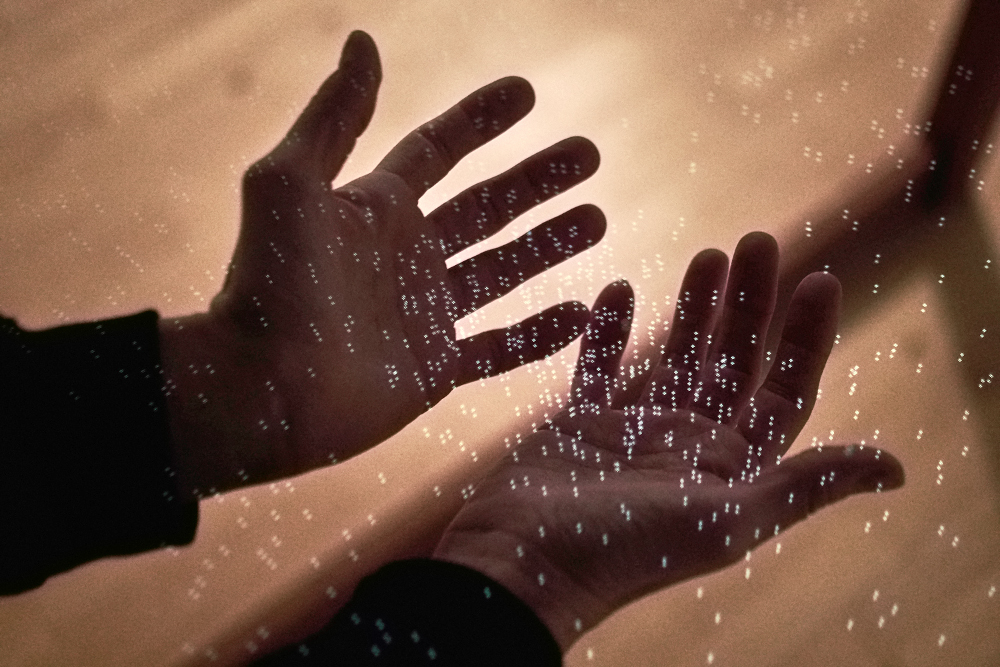
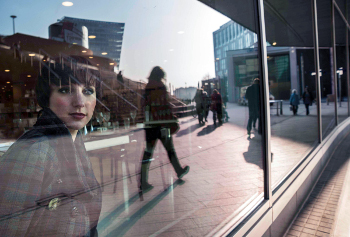
About the artist
The amazing resources at York University and great researchers collaborating on the project will allow me put together something I could not have created otherwise. Linking sound, computer technology, science, and taking inspiration from classical artworks and human relationships, Virtual Symbiosis is a piece of work that will take my interests in working with people and communities in the public realm to a virtual form.
Laurence Payot uses the public realm as a stage to make out-of-the-ordinary things happen. People are invited to embark on a journey to transform their everyday and bring their shared utopian visions to life.
From inventing a new local folklore with the people of Dunstable, to infiltrating the digital realm with manifestations of a mysterious online tribe, her artworks take forms that connect people and challenge our perceptions of each other.
Laurence has recently been awarded the prestigious SkyArts Ignition: Futures Fund, a one-year bursary by the TV channel SkyArts, and has been commissioned by renowned museums, galleries and live art festivals including the Pompidou Centre-Metz (France), Tate Modern, Liverpool Biennial (UK) and the Belluard Bollwerk International (Switzerland).
Born in France, Laurence Payot is currently based at The Royal Standard studios in Liverpool, UK.
Find out more about her work

